
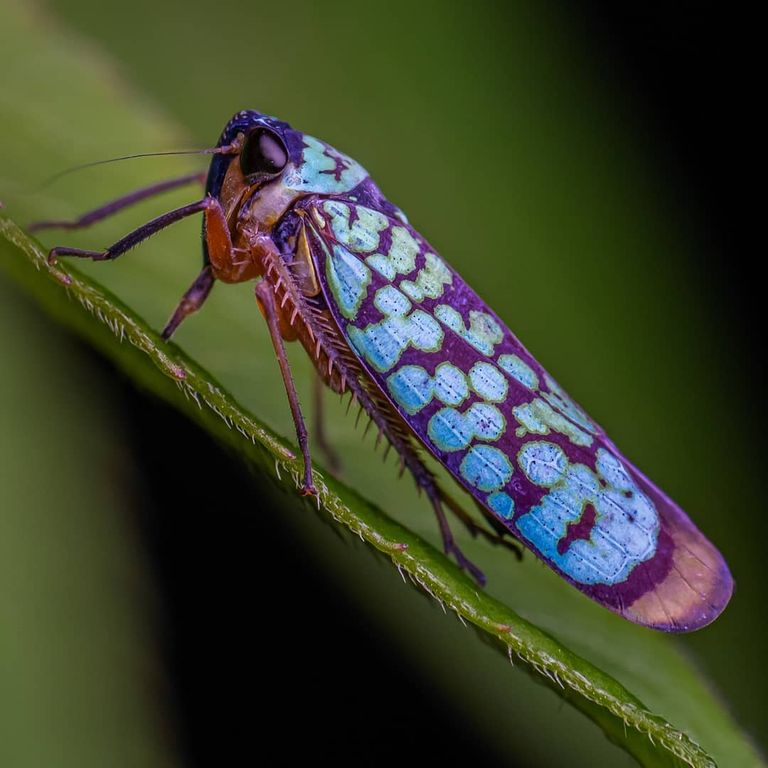
hello blurt friends, today I am very happy because I can post again on blurt, so here I will post some photos of bees that I managed to take this morning. so this morning I was looking for content to post on blurt, so I went to the forest in my village to look for some objects that I would photograph, when I arrived in the forest I saw some very beautiful small beetle and I immediately took my camera to take a picture of the small beetle
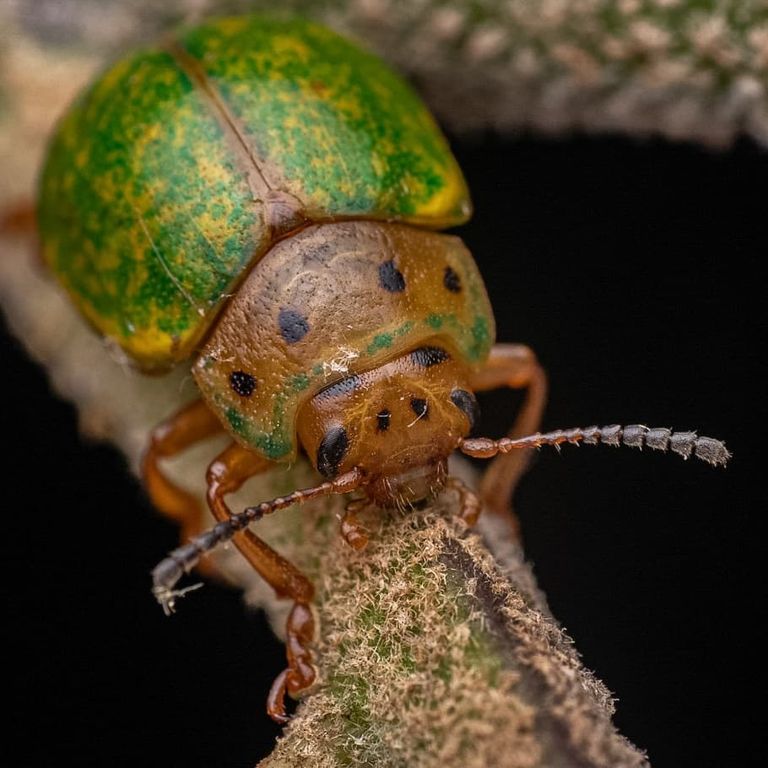
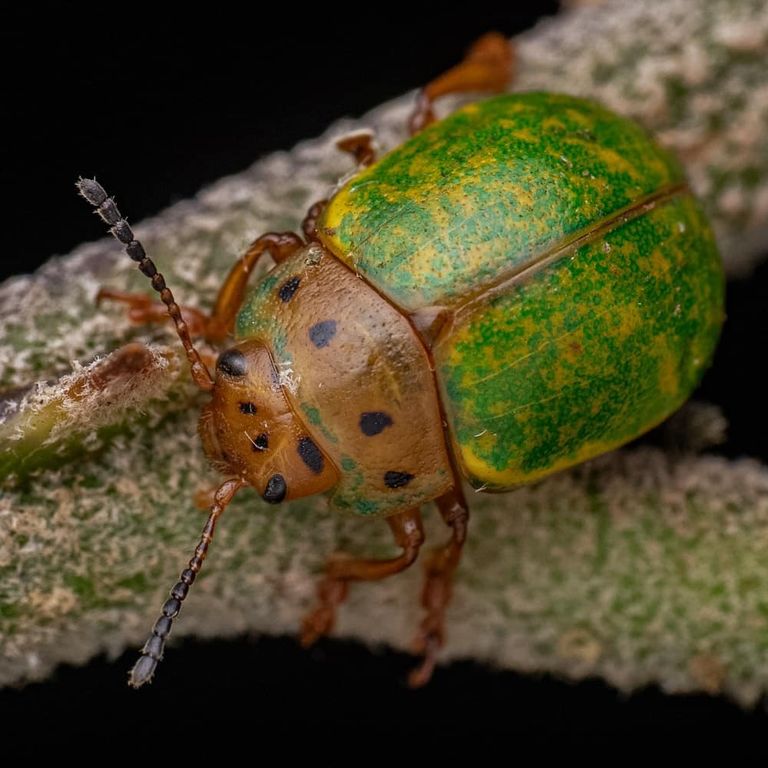
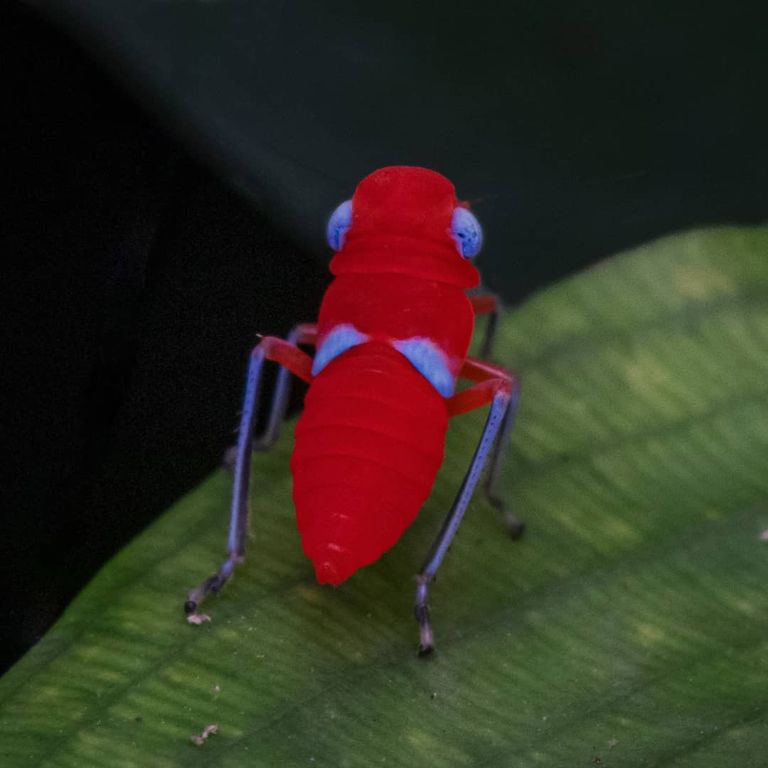
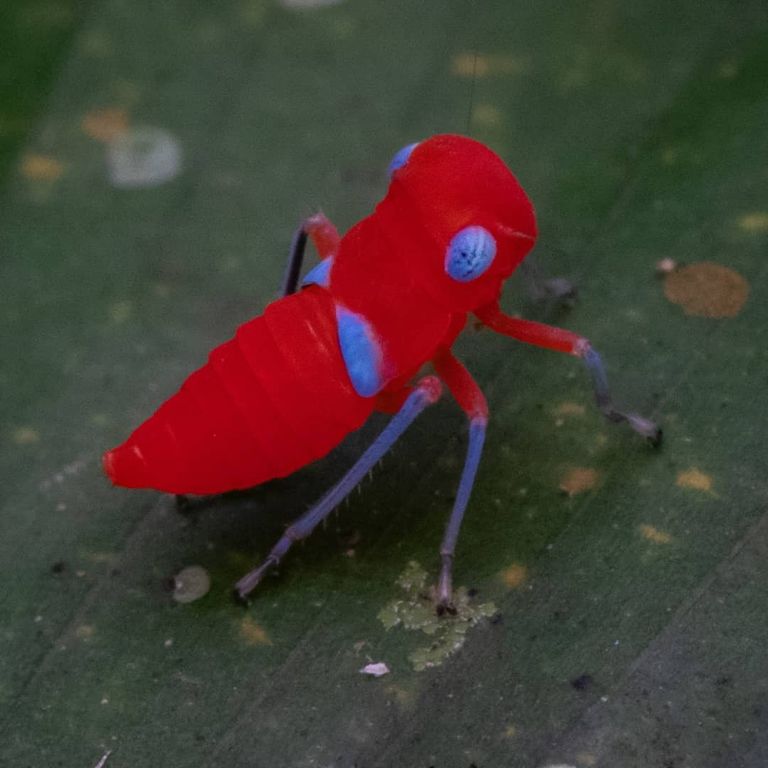
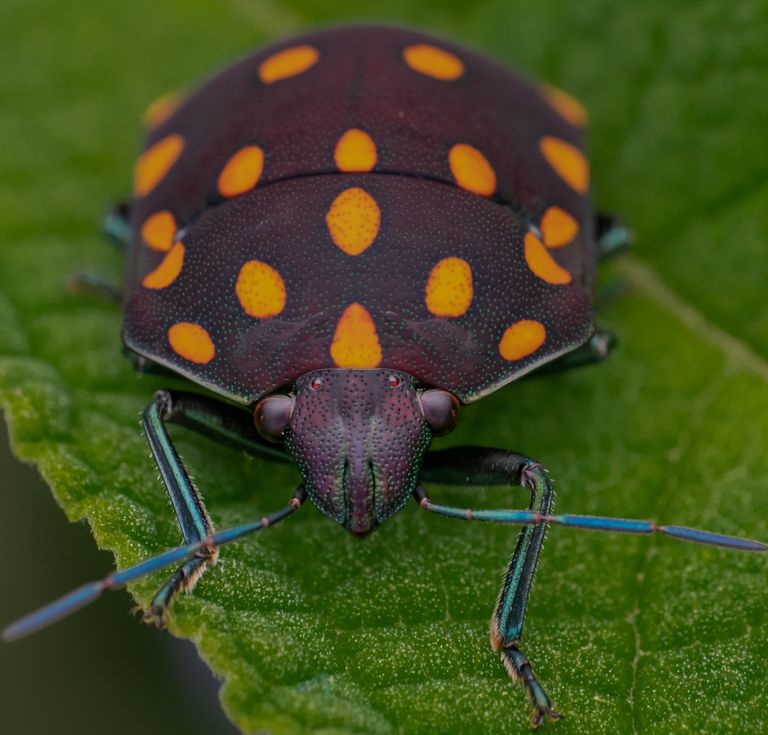
Beetles are a group of insects that make up the order Coleoptera /koʊliːˈɒptərə/. The word "coleoptera" comes from the Ancient Greek , koleos, and , pteron, which together mean "sheathed wings," since most beetles have two pairs of wings. The pair of wings that are in front are called elytra. This pair of wings hardens and thickens which can protect the pair of wings behind it and also protect the back of the beetle's body.
The order Coleoptera has more species than any other order, accounting for nearly 25% of all known animal life forms.[2][3][4] About forty percent of all described insect species are beetles (about 400,000 species[5]) and new species are found frequently. The largest taxonomic family, Curculionidae, also belongs to this order.
The distribution of beetles is very wide. Beetles can be found in all major habitats, except in the oceans and polar regions. They interact with their ecosystem in a variety of ways. Some species of beetles are detritus producers, destroying dead animal and plant tissue, eating certain types of carrion, and eating garbage. Some species eat mushrooms. Some species are flower and fruit eaters. There are also species that are parasites or parasitoids. Some other species are predators or predators of other invertebrates. Many species of these predatory beetles are important as control of agricultural pests. For example, beetles in the family Coccinellidae prey on aphids, scale insects, thrips, and other plant-sucking insects that can cause crop yield damage.
In contrast, some species of beetles are prey for a variety of invertebrate and vertebrate animals, including insects, fish, reptiles, birds, and mammals. Weevils are generally not serious pests, but they do include agricultural and industrial pests, such as the Colorado potato beetle Leptinotarsa decemlineata, the cotton beetle Anthonomus grandis, the red flour beetle Tribolium castaneum, and the cowpea beetle Callosobruchus maculatus. Including the death-watch beetle, its larvae can cause serious damage to buildings by gnawing at wood.
Species in the order Coleoptera are generally characterized by the presence of an exoskeleton and hard forewings (elytra). This elytra distinguishes beetles from most other insect species, except for a few species of Hemiptera. The beetle's exoskeleton consists of many plates called sclerites, separated by thin sutures. This design creates a beetle defense while maintaining flexibility. The general anatomy of beetles is fairly uniform, although certain organs and appendages can vary greatly in appearance and function among the many families within this order. Like all insects, the beetle's body is divided into three parts: head, thorax (thorax), and abdomen (abdomen).
INFORMATION
Camera Canon
Lens Canon MP-E 65mm 1-5x Macro Lens
Photography bees
Location Indonesia
Photographer @mursalin7